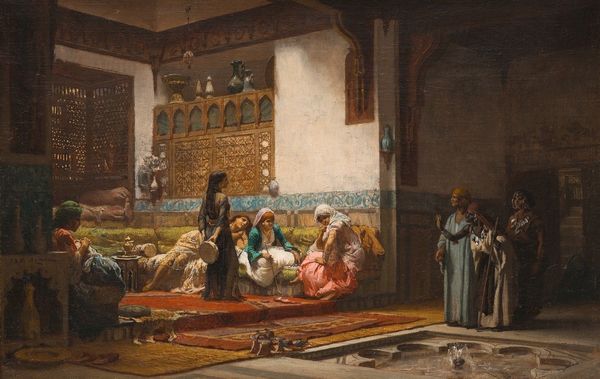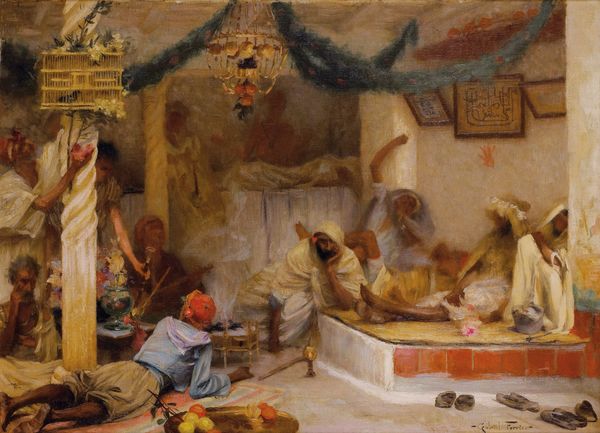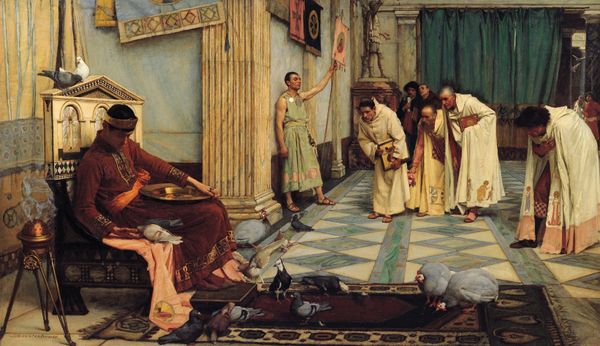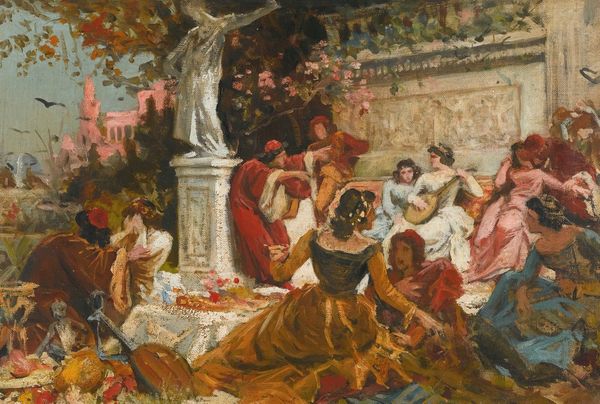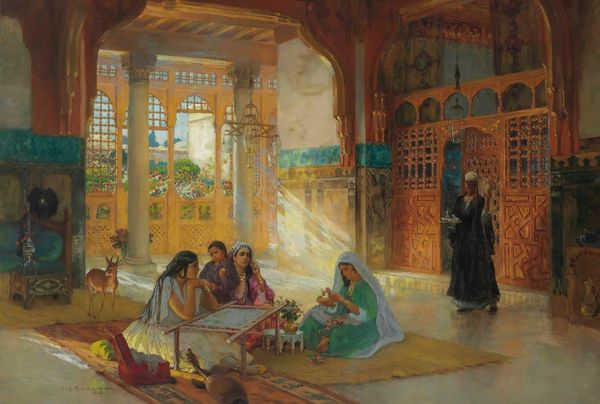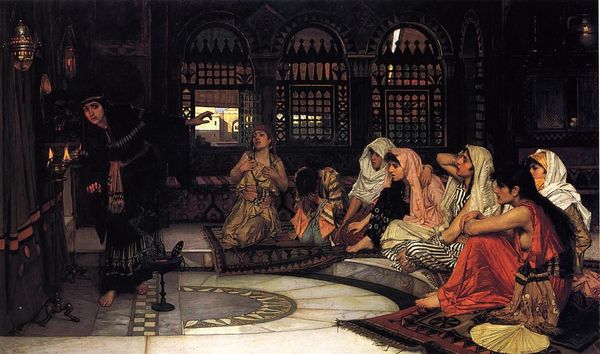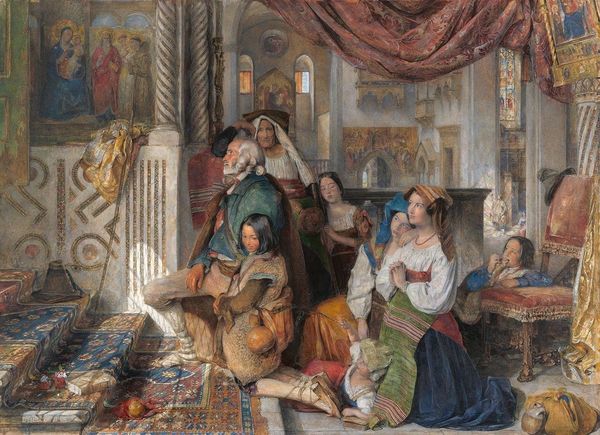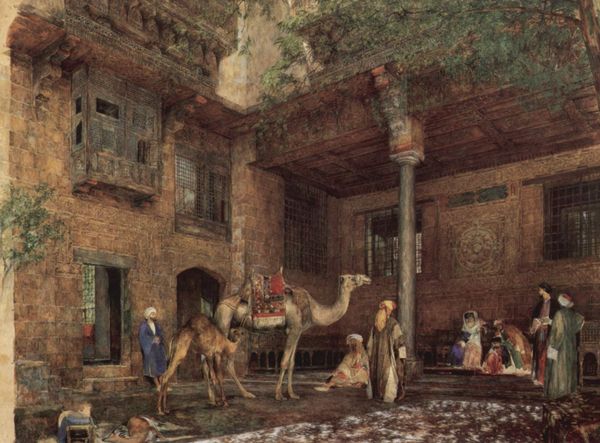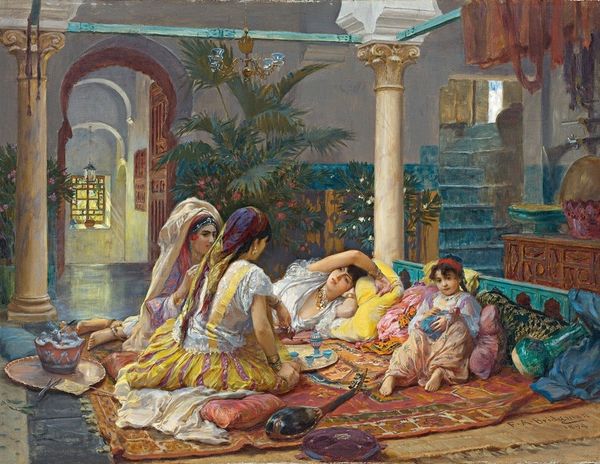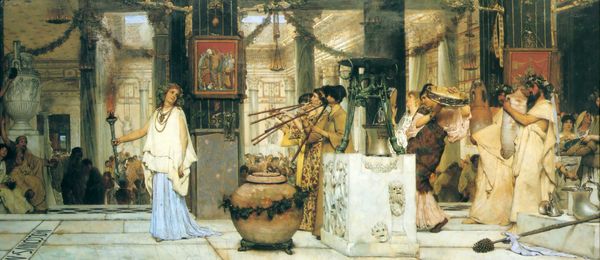
painting, oil-paint
#
portrait
#
painting
#
oil-paint
#
oil painting
#
intimism
#
orientalism
#
painterly
#
genre-painting
#
history-painting
#
realism
Copyright: Public domain
Curator: What a striking composition. There’s so much to unpack in John Frederick Lewis's 1865 oil painting, "The Harem - Introduction of an Abyssinian Slave.” Editor: Yes, it's incredibly evocative. I'm immediately struck by the contrast – a sense of languid opulence juxtaposed with the obvious vulnerability of the newly introduced figure. It makes you wonder what the materials and fabrics used were really like. Curator: Exactly. Lewis was known for his meticulous detail, wasn't he? Think about the sheer volume of fabrics represented – the way he layers color and texture suggests a deliberate emphasis on consumption and display as signs of wealth. And the process! How long did it take him to reproduce all that intricate latticework? Editor: True. But I can't ignore the painting’s inherent Orientalism, that problematic Western gaze on the "exotic" East. The painting is steeped in power dynamics; we are placed as observers, voyeurs almost, of a scene of potential exploitation. It reduces complex identities to spectacle. The idea of harems are western tropes really! Curator: Right. I mean, Lewis himself lived in Cairo for years. He had access, but how much did he really *understand* the culture? It all boils down to representation, doesn't it? The construction of these materials in the scene represents a projection of fantasies. Editor: Precisely. Consider how the enslaved woman's figure is positioned. Her presentation highlights the colonial practice of reducing people to mere commodities. She’s the ultimate exotic "find," to be acquired and consumed. Curator: And we have to look at how that relates back to the creation of this painting itself, right? Lewis was working within a market that prized these kinds of Orientalist fantasies. So he had the economic incentive to represent these scenes the way that he did. Editor: It forces us to really confront our roles as viewers, even now. We’re implicated in the ongoing consumption and perpetuation of these narratives. Curator: Well, seeing it through the lens of production really sheds light on how the art market and societal expectations shape artistic output. It leaves you with more questions than answers about artistic agency. Editor: Yes, recognizing the historical and ethical complexities at play encourages critical thought rather than passive viewing, really enhancing its role in sparking dialogue.
Comments
No comments
Be the first to comment and join the conversation on the ultimate creative platform.
